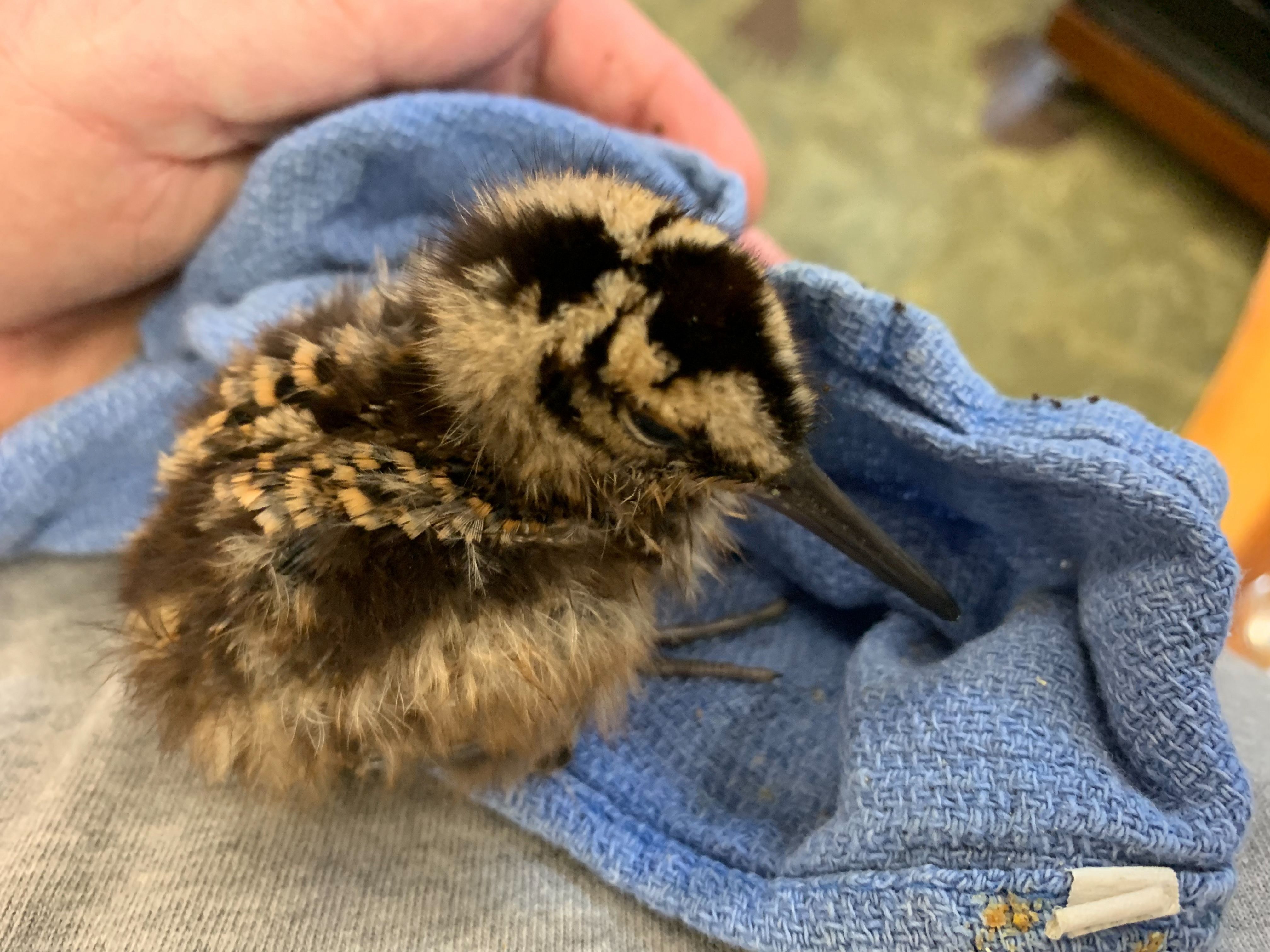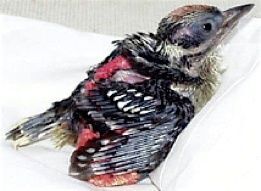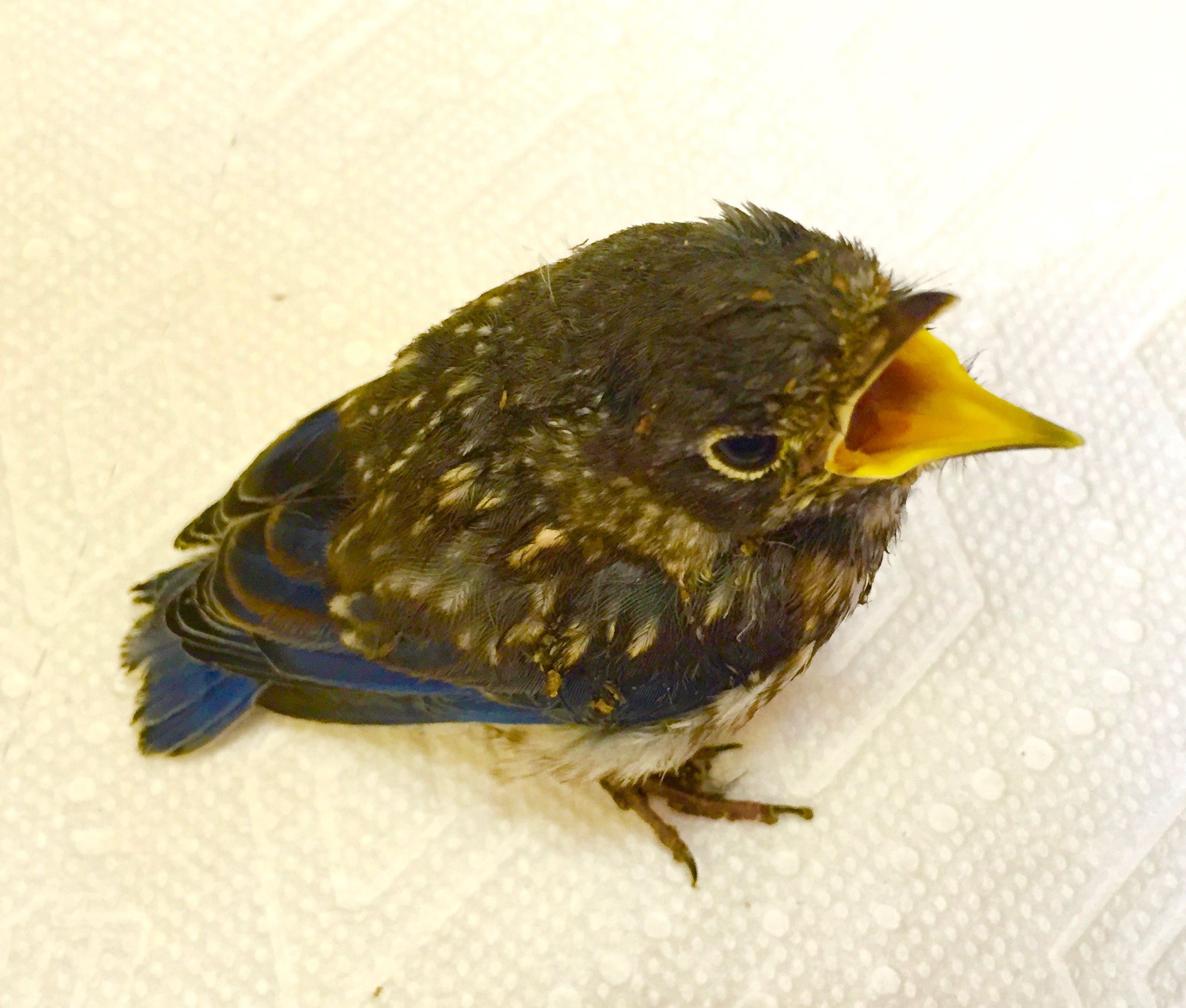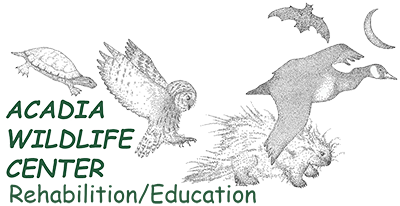Birds
The third group of animals that may or may not need your help are baby birds. This is a large and complicated group and many baby birds are “birdnapped” by well-meaning people. Again, the most effective strategy is to talk to a rehabilitator before you invertedly take a baby away from its family. Wild animals are extremely attached to their young and the baby’s best chance at a normal life (unless injured) is with their parents.
Birds are hatched in one of two group types, precocial and altricial. Precocial birds are covered with fuzz and walk away with their mother from the nest almost immediately. With a little help, they can feed themselves completely within a few days. This group includes ducks, shorebirds, and gamebirds. If you find one alone it is in trouble and you must transfer these to rehabilitators immediately where professionals know the natural history of the species, foods, and the best way to reunite the baby with its family depending on species it is.

Altricial birds range from Hummingbirds to Eagles. They are hatched in some sort of nest, sometimes on the ground. They are naked with a bit of fuzz, eyes closed, and unable to move or lift their heads at first.

The parents must keep them warm and provide constant food in the daylight hours, which means that both parents are often involved. They remain in the nest while their feathers change from fuzz to spine -like feather shafts, to feathers like adults. The only exception to this progression are owls. While still fuzzy and unable to fly they leave their nest and sit on a branch nearby if they fall to the ground the parents will still feed them and protect them. Unless they look sick, leave them alone. Some species fly directly from their nests like this downy woodpecker, but most flutter down to the ground where they spend the next week of so gaining muscle and feather length.
NESTLING-should be in nest.

If a nestling has fallen from the nest prematurely, or the entire nest has fallen please call the wildlife rehabilitation clinic for advice. It’s possible that fallen babies have been injured and need to be examined. Until a decision has been made, keep the nestlings warm on some sort of heat source or they can become hypothermic.
FLEDGLING- should be on ground not flying well.

Once most species have a tail that is at least 1/4 inch long and short adult feathers, no matter what size the bird, they are meant to be out of the nest, like the cedar waxwing chick above or the bluebird chick below. Do not try and put them back in. They hop about, gaining strength, showing no fear, and begging almost constantly. Their parents know their voices and come to them to feed them. They should be moved out of roads, but do not move them away from the immediate area. Their parents have no sense of smell and do not care if you pick them up to move them out of danger. Put your pets inside and leave them alone.

SO HOW TO TELL A HEALTHY CHICK from one that needs your help? Cats are the biggest danger. If they roam free, they will play with the baby and often leave it to die. The bacteria in a cat’s mouth is lethal and any baby that has been handled by a cat needs medical care. These babies often sit very still with their feathers all fluffed out, not begging. If you look carefully, you can tell a healthy active bird from one that is sick.

The Chickadee chick above needs help, fluffed out and eyes closed. The Great Horned Chick shown first below is ill, closed eyes, dehydrated, and immobile. The second photo of same chick has recovered well over several weeks of care, eyes wide, clicking its beak at you, ready to nail you with those feet.


If you have an outdoor cat and believe it has the right to be free, please know that almost every day in the summer we receive one or more cat mauled babies who never have had a chance to grow up. KEEP YOUR CATS INSIDE!!

